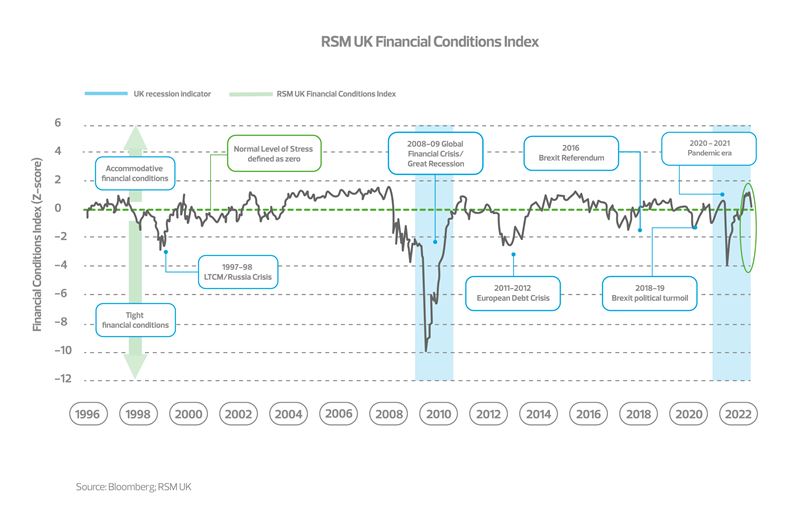28 February 2022
Thomas Pugh, economist at RSM UK comments: ‘After a slow start, the Russian incursion into the Ukraine has virtually overnight exerted its influence on UK financial markets. The FTSE 100 has lost more than 4% of its value relative to last week’s close with a concurrent jump in volatility. Increased volatility in the currency market and widening spreads in the money and corporate bond markets are also signaling additional risk being prices into financial assets.
‘The RSM UK Financial Conditions Index resumed its downtrend, dropping again to neutral (reading 0.03) after a long period of accommodation fostered by central bank policy during the health crisis. We are entering yet another crisis brought on by an external shock, which if continued will likely lead to energy and product shortages and higher prices and distortions in the financial markets.

‘Though not yet in the range of financial collapse the deterioration in the financial markets is cause for concern because stability in the financial conditions is a pre-requisite for investment and economic growth. A geopolitical crisis like this would normally cause policymakers to become more cautious. However, the Monetary Policy Committee has made clear that it is more concerned about the upside risk to inflation from higher energy prices than the damage to economic growth. So, unless the crisis gets much more severe, the MPC will probably continue to normalize interest rates.
‘Financial conditions are likely to remain subdued compared to their recent levels over the next few weeks as the crisis in Ukraine depresses the prices of risky assets and increases volatility in financial markets. Over the longer term, risky asset prices should rebound but the normalisation of interest rates should keep financial conditions around the neutral level.’
RSM UK’s composite index quantifies the degree of risk priced into financial assets. Index values around zero indicate -- by definition -- normal levels of pricing and volatility. Positive levels of the index indicate an accommodative climate conducive for the flow of borrowing and lending. Negative values signify increased perceptions of the potential for default, requiring additional compensation for holders of that risk.







